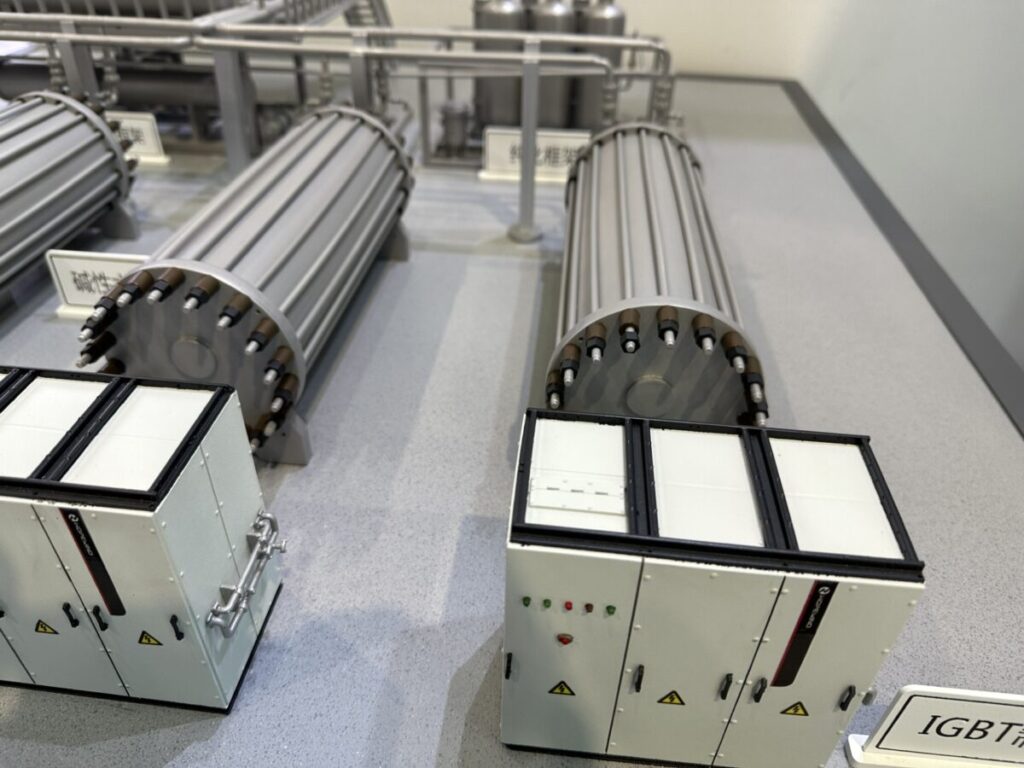Scientists in Australia have integrated the overload capacity and power-dependent efficiency of the electrolyser into a new techno-economic model to calculate the levelized cost of hydrogen. The proposed methodology was applied to determine the impact of internalizing environmental costs on the cost competitiveness of green hydrogen compared to gray hydrogen.
A group of researchers from Griffith University in Australia have developed a new method to evaluate the levelized cost of hydrogen (LCOH), which includes overload capacity and the power-dependent efficiency of the electrolyzer as new parameters.
“We decided to follow the techno-economic modeling approach based on the performance of the actual system. Because not accounting for variability in electrolyser efficiency, as is often observed in green hydrogen studies, results in a substantial overestimation of hydrogen production costs,” said corresponding author Mostafa Rezaei. pv magazine.
The new methodology takes into account the input power of the electrolyzer, the occasional operation of the electrolyzer under overload conditions, and the actual operating characteristics based on the type of electrolyzer. In addition, it includes the calendar life of the electrolyzer system and the useful life of the stacks in operational hours, as well as the learning rate to predict the routine replacement costs of the electrolyzer stack at end of life. In addition, it includes economies of scale and the costs of desalinated water and required land.
“Our analysis is based on the direct connection of a PV power plant and an almost direct connection of a wind turbine installation (WT) and an electrolysis array,” the group explains. “This approach reduces initial investment costs by eliminating (PV) or reducing (WT) the need for power converters, reducing system complexity and minimizing power losses. In our research, we focus on two electrolysis options, chosen based on their technology readiness levels: Alkaline (ALK) and PEM technologies.”
The new model was used to analyze the LCOH in several regions of Australia designated as hydrogen hubs. “While the methodology developed here is applied specifically to these regions, it is equally applicable to any other region in the world,” the academics pointed out. “In the context of this study, we therefore examine Bell Bay in Tasmania, Eyre Peninsula in South Australia, Gladstone and Townsville in Queensland, Latrobe Valley in Victoria, Hunter Valley in New South Wales and Pilbara in South Australia.”
Based on previous literature, the size and production were calculated using hourly solar and wind energy profiles specific to the hydrogen hubs. The weighted average cost of capital (WACC) was between 2% and 8%.
Based on these values, the research team also assessed whether the target cost of 2-3 AUD ($1.32-1.98) per kilogram – as set out in Australia’s National Hydrogen Roadmap – is achievable.
“In the base case for the PV installation and the scale range investigated, the target value could only be achieved in the Pilbara region. The threshold scale for achieving the target value is 350 tons/day, which requires a 2.1 GW PEM electrolyzer,” the scientists pointed out. “In the baseline scenario for the wind-based plant, Eyre Peninsula and Pilbara show the greatest potential. However, the target value remains unattainable at any hub.”
Using sensitivity analyses, the academics found that WACC, scale factor, capital expenditure (CAPEX), electrolysis efficiency and overload influence the LCOH. They found that a WACC of 6%, PV scaling factor (SF) of 0.85 and PEM stack SF of 0.84, applied in the Gladstone region, are sufficient to achieve an LCOH of 3 AUD/KG . “Alternatively, if significant economies of scale cannot be achieved, then WACC = 6%, PV SF = 0.88, PEM stack SF = 0.87, together with an increase in electrolysis efficiency of 1% per year would be sufficient are,” they added.
The results of their findings were presented in “Leveled costs of dynamic green hydrogen production: a case study for Australia’s hydrogen hubs”, which was recently published in Applied energy.
“Australia certainly has the potential to become a powerhouse in cost-competitive renewable hydrogen. However, without significant economies of scale, the country risks falling behind in this crucial sector,” Rezaei concludes. “Introducing carbon costs based on the carbon intensity of hydrogen production methods could significantly increase the cost competitiveness of green hydrogen at certain hubs.”
This content is copyrighted and may not be reused. If you would like to collaborate with us and reuse some of our content, please contact: editors@pv-magazine.com.

